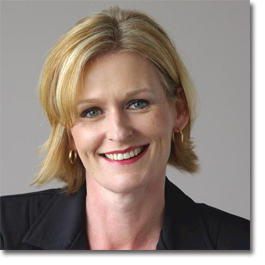For the wealthy, carrying a mortgage is part of the strategy
DAVID ISRAELSON Special to The Globe and Mail
Paying off a mortgage is often a point of pride. For the wealthy, however, it might not be the smartest thing to do.
The reasons to hold on to a mortgage are compelling, says Andrea Thompson, senior financial planner at Coleman Wealth, Raymond James Ltd. in Toronto.
“Mortgage debt has never been cheaper than it is today. You can go to one of the major banks, get or maintain a five-year fixed-term mortgage for below 3 per cent,” she says. “Then you can use the cash to buy the bank’s stock and earn a dividend that’s greater than the interest rate on the mortgage, say between 3.5 and 4.5 per cent.”
The math of this type of borrowing and investing “absolutely makes sense if it’s affordable in terms of your cash flow,” Ms. Thompson adds.
But psychology can get in the way. “It can be a barrier for some people who, regardless of interest rates, abhor carrying debt. The right strategy will vary from person to person.”
A survey by Investors Group in 2014 found that 67 per cent of high-net-worth Canadians with a mortgage had the cash to pay off their homes in full, but they didn’t. (The survey defined wealthy Canadians as those with $500,000 or more in investible assets.)
What has changed since 2014 is interest rates finally look like they will go up. They have been at historically low levels for nearly a decade now, but in mid-March the U.S. Federal Reserve raised its benchmark lending rate by a quarter point to between 0.75 and 1 per cent, its third rate hike since 2015.
Canada, on the other hand, has cut its key rate in the same period, in an effort to stimulate the economy. In any case, the Bank of Canada and other central banks usually send strong signals about impending rate changes long before they take place, to avoid surprising the markets.
“Eventually [Canada’s] rates are likely to increase, but not that quickly,” says Chris Nicola, co-founder and chief technology officer at WealthBar, a robo-advisor investment service based in Vancouver. “As long as mortgage rates remain at historical lows and people can afford to pay the principal, a mortgage is a good option for leverage.
“However, whenever one is using leverage to invest, you need to keep in mind that risk increases proportionally,” he says. “A significant market loss could impact your ability to pay the principal on your mortgage.”
In addition to the potential for market loss, borrowers also face the possibility, however remote it may seem, that mortgage rates will finally rise.
Even as the Bank of Canada declined to hike rates, Canadian banks have raised their mortgage rates slightly since the election of U.S. President Donald Trump last November, and in anticipation of U.S. increases.
“My worry a few years ago was that we were getting too comfortable with historically low interest rates,” says Markus Muhs, investment advisor and portfolio manager at Muhs Wealth Partners, Cannacord Genuity Wealth Management in Edmonton.
“Today I have two worries,” he says. “The first is that it looks like we really will be seeing rising interest rates.
“My second worry is that it is becoming increasingly difficult to find quality investments that yield more than what a mortgage costs, which is around 3 per cent. It will be more difficult to find ones that yield more than the mortgage if rates return to historic normal levels, or 5 or more per cent,” he says.
High-net-worth investors who want to take advantage of low mortgage rates have other options, too, Ms. Thompson says.
“We are also seeing individuals who have paid off their mortgage borrow against the equity in their home and use those funds to invest and create an additional income stream. This strategy is called the ‘carry trade,'” she says.
In Canada, mortgage interest payments are not tax deductible, but “if structured properly, the interest paid on the borrowed money can become tax deductible. The investments can be structured to create an income stream that not only covers the interest costs from borrowing, but adds to your retirement income,” Ms. Thompson says.
“Carry trade” investors need not focus on whether the value of their home is rising sharply, as in real estate markets such as Toronto or British Columbia’s Lower Mainland.
The key to this strategy is to treat the investment portfolio as a landlord would treat a rental property – by investing for income first, and price appreciation second, Ms. Thompson says.
The borrowing-to-invest strategy has been around for decades, and whether you like it depends how you view debt, says George Christison, a British Columbia-based financial advisor and founder of the investingforme.com website.
“If you believe that debt is a good thing [as a tool for investors], then you’re going to be in favour. If you dislike debt, you’ll be against it.”
Comments are closed.










